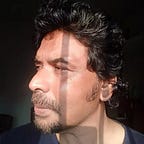Turtles Can Fly is a 2004 Kurdish war drama film written, produced, and directed by Bahman Ghobadi. The first film to be made in Iraq after the fall of Saddam Hussein. A rare Iranian-Iraqi production reflects the saga of war and its destructive effect on the innocent kids through the backdrop before Gulf War II, at a refugee camp in Iraq’s Kurdistan.
Ghobadi’s movie depicts an unnerving calm and the world for impassive, unfamiliar, and devastatingly real. Yet, there’s a stark splendor, dreamy and magic elements blend into a disturbing whole. The visual smirk steals the façade throwing many unanswered questions into a dire realm of ominousness that makes your gut anguish.
Bahman Ghobadi’s Turtles Can Fly defines a whole new experience and transports the audience to the wave of contemplative circumstances set in a Kurdish Refugee camp. The everyday lives of children before the US invasion in March 2003 appear nowhere like a mirage. The narrative focuses on the Kurdish children of Kanibo– a village on the border of northern Iraq and Turkey.
Ghobadi sights the final scene to initiate. The film intensifies the layer of events that leads to the cliff edge. The main character is Soran (nicknamed Satellite), is a young man who looks after a large group of children orphaned by war. The children are used to deactivate and remove land mines embedded in mountainous farmland. They carry them in oblong, straw baskets, strapped on their backs. Many of the children have broken their arms and legs. Hengov, a boy who foretells the imminent, uses his mouth to disarm the active mines, which means a millimeter-mistake could explode his own life.
Hengov and his sister, Agrin, take turns carrying their little brother, Riga. They belong to Halabcheh (Halabja). The village is known for the fact that Saddam Hussein used chemical gases over the Kurdish population. Through flashback, viewers see Agrin suffers from vivid memories of war (post-traumatic stress disorder) and traumatized by molestation and rape by the Iraqi soldiers
Riga may or may not be her child, but Riga (a child created through rape) symbolizes the memory of her horrifying experience. The inception of the war throws lives in danger. The villagers seek information from T.V. Soran, aka Satellite, travels with his sidekick, Shirkooh, to Arbil, exchanging fifteen radios and 500 dinars for a satellite dish. The village governor (Esmaeel) depends on Satellite for the Kurdish translation of CNN’s war coverage. While Satellite flips through the channels, the elders turn away from risqué material. Still, Satellite relies on Hengov’s futuristic visions for information on the war. Satellite fears that a wrong prediction will make him lose face in the village. When Hengov’s prediction of a truckload of warheads would explode come true, and so his forecast becomes a reliable source among the locals.
The passages through the war ravened warfare junkyard illustrate the validated silence of the children. The mother who’s suffering from the loss of a child destroys the soul of anyone gaze upon her. The landscape littered with empty tank shells and rusted warheads can ever remain the playground for children after the war. They have no water, no electricity, and no schools. Most of them have no parents and sleep in tents, surrounded by barbed wire as big as rocks. That’s a close distance of torture around them, and so are the bordering Turkish soldier shoots at them from a watchtower at random.
The politics of the film show that despite whom world leaders befriend and alienate, or whether countries form alliances, or they become enemies, and how geopolitical agendas change over time- In any conflict or war. Its children suffer the most. They have no say in their existence, where they live, and how they live their lives. The children’s life remains relatively simple, and growing together doesn’t change the fact that they grow side by side for a long time, and Ghobadi explores those little places of memories and a place to end them.
Riga, with his red rubber boots, drops the turtle in a puddle of mud water. Riga’s boots and the turtle’s shell protect them to a point. The children who live in harsh conditions make the finest of tough circumstances. If the puddle is too large, they swim for redfish. Despite their tragedies, they stick together; they look out for each other, and they share their few belongings. The film resonates with the emotional timbre of their situation.
The children’s characters of Soran, Agrin, and Hengov are deeply warm. Their innocence blows in the turbulence of thin air, disappearing in the alienation of nowhere, world. The war that does not belong to them remains a soul-shattering experience. Bahman Ghobadi casts a surreal beat capturing a spell of striking music through a defining artwork of existence. The compassion harmonizes the grand melody composed by Hossein Alizadeh.
The children’s world is so close, and the effects of war upon the kids barely register to the rest of the world. If ours is a world where infants can toddle through minefields and redfish live at the bottom of sinkholes near machine-gun infested borders. There’s more a rash of purple bumps. The legs are cut, the blinds in the eyes, and the children living in abandoned tanks and treat their toothaches with kerosene. Then a mystical oracle is not such an unlikely thing, where these children are, the world’s angels. They grow up in the rubble where adults leave behind so the turtles can fly.
Film Crew
Written & Directed by Bahman Ghobadi
Produced by Babak Amini, Hamid Ghobadi, Hamid Ghavami & Bahman Ghobadi
Casting: Soran Ebrahim & Avaz Latif
Music by Hossein Alizadeh
Cinematography: Shahriah Assadi
Editing by Mostafa Kherghehpoosh & Hayedeh Safiyari
Distributed by IFC Films (US)
Release dates: 10 September 2004 (Toronto)
Language: Kurdish/Iranian
